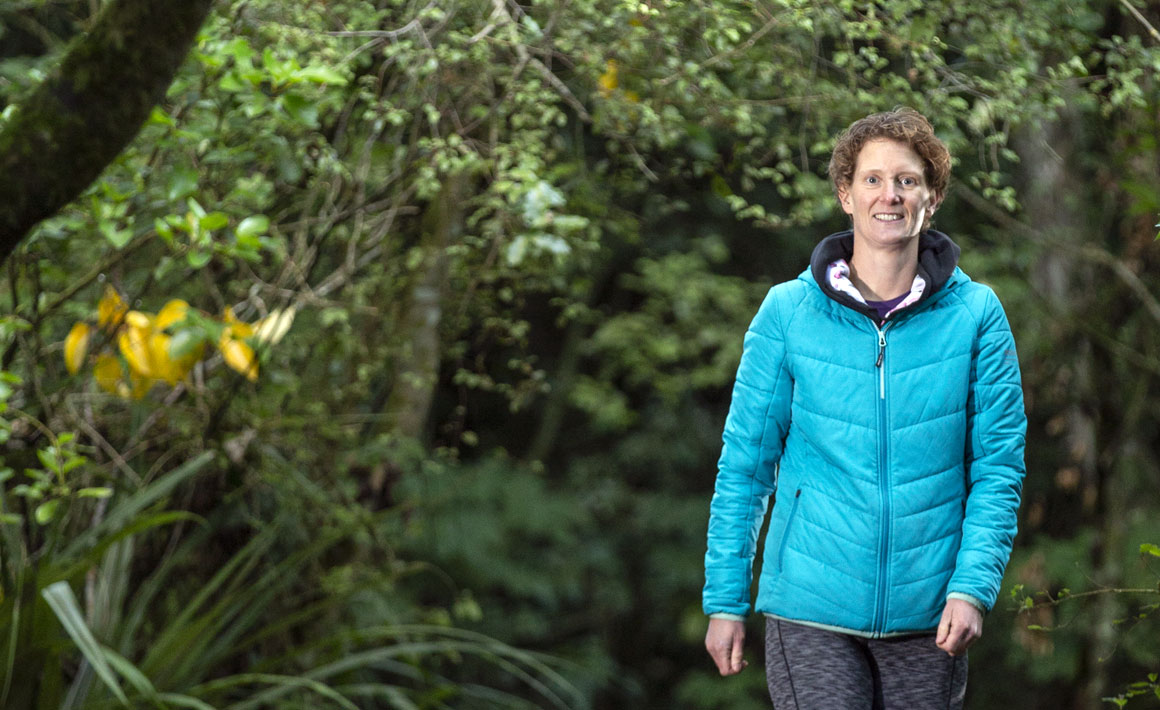 Associate Professor Elaine Hargreaves: 'We hope that New Zealanders will continue their new activity patterns post lockdown.”
Associate Professor Elaine Hargreaves: 'We hope that New Zealanders will continue their new activity patterns post lockdown.”A project examining the impact of lockdown restrictions on Kiwis' physical activity has already produced some interesting findings.
When the New Zealand government announced restrictions to prevent the spread of COVID-19 that would see the country effectively locked down for weeks on end, it also issued a public mandate on the importance of physical activity.
Aside from accessing essential services like medical assistance, prescriptions or groceries for themselves and the members of their 'bubble', the only other reason Kiwis should leave their homes was, as Prime Minister Jacinda Ardern put it, “for fresh air, a walk, or exercise”.
Lead researcher Associate Professor Elaine Hargreaves, from Otago's School of Physical Education, Sport and Exercise Sciences, says the project started after noticing people changing their physical activity behaviour locally.
38.5%
38.5% were more physically active during lockdown
“A couple of weeks into lockdown, we started seeing all these people being physically active outside, which sparked our interest into how a life-changing event like a global pandemic changes people's activity behaviour,” she says.
Joined by fellow researchers Professor Ken Hodge and Jessica Calverley from the School of Physical Education, Sport and Exercise Sciences, along with Dr Matthew Jenkins, from the Department of Psychological Medicine, Wellington, and Associate Professor Susan Houge Mackenzie and Dr Craig Lee, from the Otago Business School's Department of Tourism, the team conducted online questionnaires to find out how physical activity changed during Alert Level 4 and whether those changes continued as restrictions lifted at Level 2.
The online surveys – which attracted hundreds of responses – included questions around physical activity levels, types of activity and motivation levels, with researchers seeking to identify the daily hassles people experienced during lockdown and Level 2, and how those hassles influenced physical activity participation.
The team is also looking at the potential role of motivational quality. Previous research suggests being motivated because of the enjoyment and value attached to physical activity, such as for health and well-being – known as autonomous motivation – has positive influences on physical activity behaviour and psychological well-being, while motivation that comes from feeling an external or internal pressure to be active – known as controlled motivation – has negative influences. Being autonomously motivated may result in individuals being able to deal more effectively with daily hassles and maintain or increase their physical activity behaviour despite extra pressures.
Finally, the team is exploring how COVID-19 has influenced nature-based physical activity – thought to provide extra physical-activity-related benefits to psychological well-being. The team plans to re-survey participants in 12 months' time.
Preliminary results show that 38.5 per cent of those surveyed did more physical activity than prior to lockdown, with 25.5 per cent doing about the same, and 36 per cent doing less.
“Overall, the people who were highly active before lockdown [generally exceeding the recommended physical activity guidelines of 150 minutes moderate intensity physical activity over the course of a week] were less active than usual during lockdown, while those people who were moderately active or not very active before lockdown [either just meeting or not meeting those recommended guidelines] became more active over the lockdown period,” Hargreaves says.
“A couple of weeks into lockdown, we started seeing all these people being physically active outside, which sparked our interest into how a life-changing event like a global pandemic changes people's activity behaviour.”
“The people exercising more said that being active was important for their physical and psychological well-being, and they had more time available during lockdown to be active. On the other hand, others found they had less time available, potentially due to juggling new activities – such as home-schooling – alongside working from home.”
Almost half (45 per cent) of those people less active during lockdown said they were unable to do their preferred form of exercise, such as going to the gym or surfing due to lockdown restrictions.
Interestingly, the team also found that while being physically active has a strong influence on psychological well-being, being active in nature didn't influence people's well-being any more than being active elsewhere.
“This was unexpected and may have been for any number of reasons unique to the events surrounding COVID-19, such as being unable to keep the recommended social distance or not feeling as safe due to the COVID-19-related risks of leaving home. We hope to get a deeper understanding of these relationships when we analyse the motivation data and also through follow-up in-depth interviews with participants.
“The fact that less active people became more active during lockdown is an important result, because these individuals are those who we are trying to encourage to be more active for health and well-being,” she says. “Coupled with the findings that physical activity contributed to people's psychological well-being over lockdown, we hope that New Zealanders will continue their new activity patterns post lockdown.”
Funding
University of Otago
